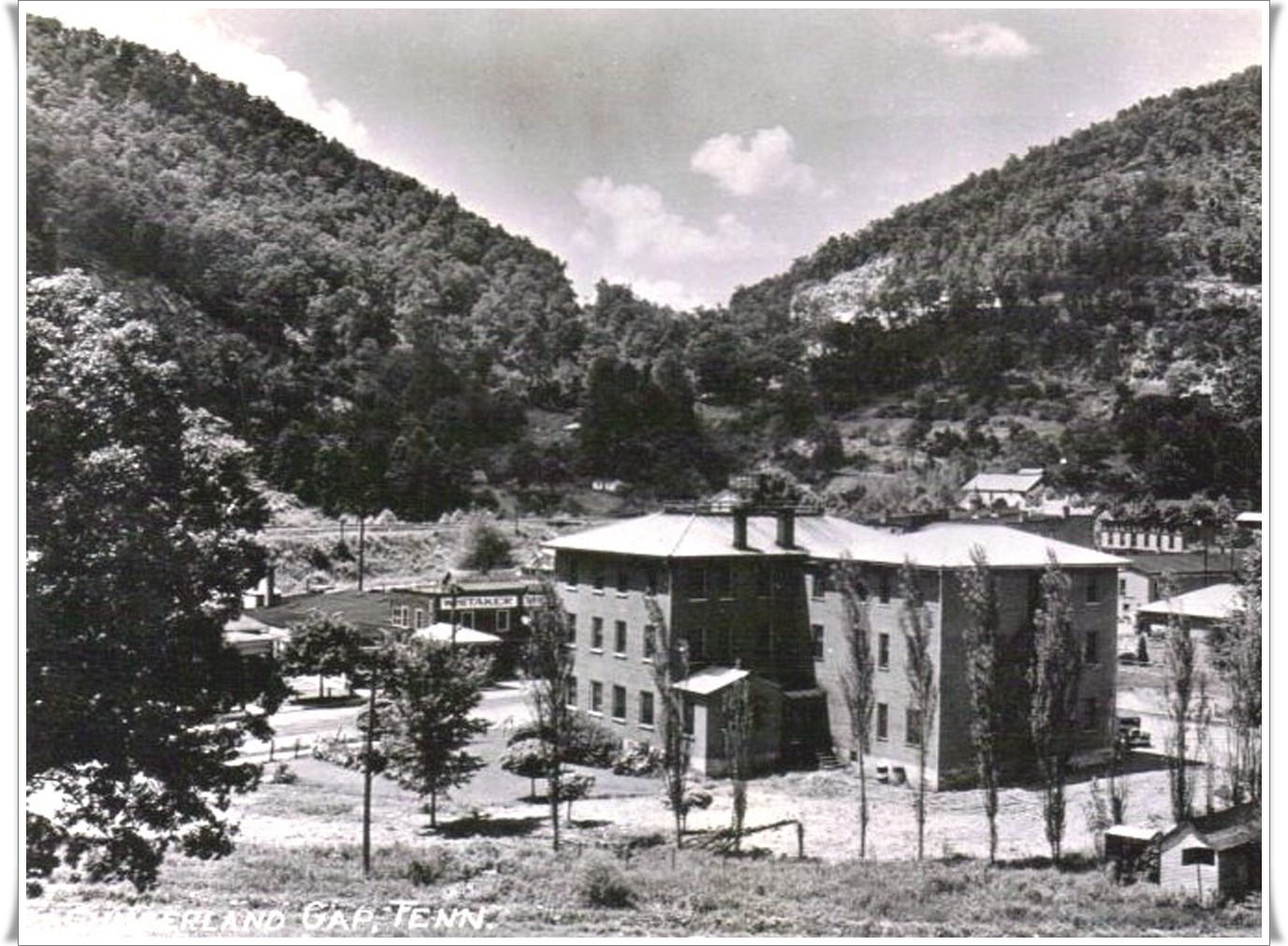 Our History
Our History
Cumberland Gap’s Historical Town Takes You Back in Time.
Within walking distance, is the historical town of Cumberland Gap where soldiers fought during the Civil War in 1863. It also has another historical significance. It is where Daniel Boone and his team crossed the Cumberland mountains and took a shortcut to Tennessee from North Carolina, in 1767. It has been name “The Wilderness Trail”.
When you visit this picturesque town, you will find quaint restaurants and shoppes as well as antiquity, art, and other interesting stores there. You will find age-old buildings, that further amplify its association with history. Stroll through downtown Cumberland Gap and enjoy the scenery and historical significance of this beautiful place.
Pictured left is early Cumberland Gap.
Cumberland Gap: A natural passage through the Mountains where Virginia, Kentucky, and Tennessee most scenically meet.
Discovery: Cumberland Gap was explored by Dr. Thomas Walker in 1750. He initially named it Cave Gap, which he later changed to Cumberland Gap. Later, during the Civil War, Daniel Boone blazed the way through the gap into Kentucky, further enhancing its significance. There were several skirmishes during the war, but no battles occurred in the area.
Named After: William Augustus, the Duke of Cumberland. Augustus famously put down Jacobite Uprising in 1746 at the Battle of Culloden. Many locals prefer the scenic features of this area to not be associated with Cumberland, because of his ruthless acts during the battle; rather, call them by the Native American term, Ouasioto.
Interesting fact: Cumberland Gap is the only town whose post office has been in three different states: Kentucky, Tennessee, and Virginia.


History of Cumberland Gap
Cumberland Gap is natural passage through the Mountains where Virginia, Kentucky, and Tennessee most scenically meet. It is a major tourist attraction for its beauty and history.
• Explore The Famous Gap Cave
• Ascend the Tri-State Peak (See all three states)
• Comfortably Enjoy Picturesque Views at Our Hotel
Discovery: Cumberland Gap was explored by Dr. Thomas Walker in 1750. He initially named it Cave Gap, which he later changed to Cumberland Gap. Later, during the Civil War in 1863, Daniel Boone blazed the way through the gap into Kentucky, further enhancing its significance.
Click Here to Read More

History of Cumberland Gap Inn
Located in a historically significant area, our hotel also possesses a remarkable past. The old hotel was located in the area that currently serves as a parking location for our guests. In 1800, the old hotel experienced a massive fire, and it was gutted to the ground.
The hotel re-emerged in its current location when an investor built it in 1974. Cumberland Gap Inn still preserves the history of the old hotel by keeping the original furniture and chandeliers intact.
Interesting Fact: The Cumberland Gap Inn became famous for a ghost-sighting in Room #213, when a film crew accidentally captured the footage. You can easily find the spooky incident’s video on Youtube.
The Historic Newlee Iron Furnace
 When Thomas Walker historically traversed the Gap, he observed water springing from a cave, which he correctly predicted to be sufficient to turn a mill. In 1819, a charcoal blast furnace was built on the stream below the Gap Cave, using sandstone blocks, while fire bricks were used to line the inside. Newlee Iron Furnace was used to smelt tons of iron throughout the 1800s thereby ushering in the industrial revolution that was destined to follow. Iron ore was mined nearby, limestone added, and firewood was made into charcoal for use as fuel. Water from the stream powered large bellows and a massive hammer mill.
When Thomas Walker historically traversed the Gap, he observed water springing from a cave, which he correctly predicted to be sufficient to turn a mill. In 1819, a charcoal blast furnace was built on the stream below the Gap Cave, using sandstone blocks, while fire bricks were used to line the inside. Newlee Iron Furnace was used to smelt tons of iron throughout the 1800s thereby ushering in the industrial revolution that was destined to follow. Iron ore was mined nearby, limestone added, and firewood was made into charcoal for use as fuel. Water from the stream powered large bellows and a massive hammer mill.
The furnace used to consume 625 bushels of charcoal and 1500+ lbs. of limestone every day to produce around three tons of iron daily. This iron was sold to local blacksmiths, and also shipped as ingots or “pigs” to Chattanooga, TN.
